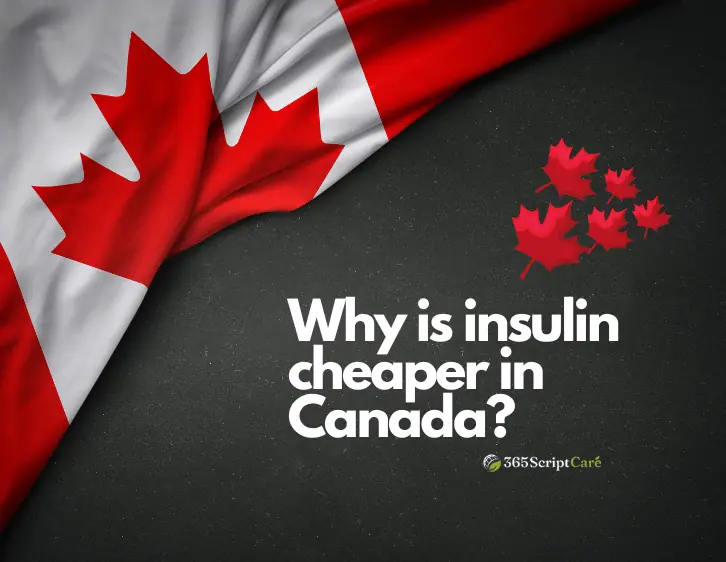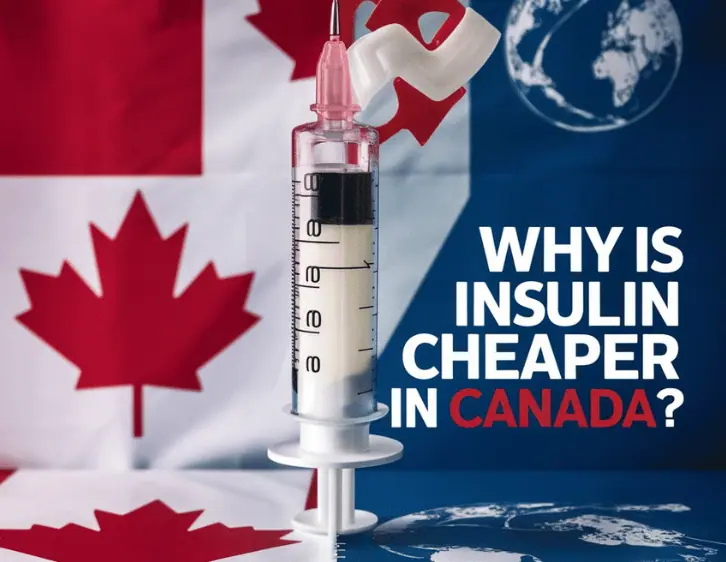
The affordability of insulin has become a critical issue globally, particularly highlighting stark differences between countries like the United States and Canada. In recent years, the soaring cost of insulin in the U.S. has sparked widespread debate and raised questions about why the same life-saving medication is significantly cheaper across the border in Canada. Understanding the factors behind this price disparity not only sheds light on healthcare economics but also underscores the impact of healthcare policies and market dynamics on medication accessibility. This discussion explores the key reasons why insulin prices are notably lower in Canada compared to the U.S., offering insights into regulatory frameworks, market competition, and healthcare system differences that influence drug pricing.
Overview of Canada’s Universal Healthcare
Canada’s healthcare system is characterized by its universal coverage, ensuring that all residents have access to essential medical services regardless of their ability to pay. Key features of Canada’s healthcare system include:
- The Canadian healthcare system provides coverage for medically necessary services, including hospital visits, physician services, and essential medical treatments.
- Healthcare services are publicly funded through taxation, with each province and territory responsible for administering and delivering healthcare within their jurisdiction.
- Canadians have the freedom to choose their healthcare providers and access services without facing financial barriers at the point of care.
- While healthcare coverage is universal, specific services are covered and wait times may vary between provinces and territories.
Government’s Role in Drug Pricing
In Canada, the government plays a significant role in regulating drug pricing to ensure affordability and accessibility for its population:
- The federal and provincial governments negotiate drug prices with pharmaceutical companies to establish a list of approved medications covered under public drug plans.
- Canada’s patent laws allow for generic versions of medications to enter the market sooner than in some other countries, promoting competition and driving down prices.
- The Canadian government’s ability to negotiate drug prices based on the purchasing power of its healthcare system helps keep costs lower compared to countries with less centralized healthcare purchasing.
- Many Canadians receive prescription drug coverage through public drug plans administered at the provincial or territorial level, which negotiate prices and determine coverage criteria.
Pharmaceutical Regulations in Canada
Patented Medicine Prices Review Board (PMPRB)
The PMPRB is a key component of Canada’s pharmaceutical regulation system. Established in 1987, it’s a federal agency that regulates the prices of patented medicines to ensure they are not excessive. Here’s how it operates:
- The PMPRB reviews the prices of all patented medicines sold in Canada, including insulin.
- It compares prices to those in seven other countries: France, Germany, Italy, Sweden, Switzerland, the UK, and the US.
- The PMPRB sets maximum prices based on these comparisons and other factors like therapeutic value and inflation.
- If a company sets prices above the allowed maximum, the PMPRB can order price reductions and require the company to repay excess revenues.
Price Negotiation and Bulk Purchasing
Canada employs several strategies for price negotiation and bulk purchasing
- pan-Canadian Pharmaceutical Alliance (pCPA): This alliance allows provinces and territories to jointly negotiate drug prices with manufacturers.
- Bulk purchasing: By negotiating for all provinces and territories together, the pCPA can secure better prices through volume discounts.
- Formularies: Each province maintains a list of drugs it will cover. Getting on these lists gives pharmaceutical companies access to a large market, incentivizing them to offer competitive prices.
- Reference-based pricing: Some provinces use a system where they only cover the cost of the least expensive drug in a therapeutic category, encouraging the use of cheaper alternatives.
Factors Contributing to Lower Insulin Prices in Canada

Several factors contribute to the lower prices of insulin in Canada compared to many other countries. Firstly, Canada benefits from a robust system of government negotiation and regulation. The Canadian government negotiates drug prices with pharmaceutical companies, leveraging its purchasing power to secure favorable pricing for medications like insulin. Regulatory agencies also play a crucial role by setting price controls and monitoring pricing strategies to ensure affordability and accessibility across the country. This proactive approach helps prevent price gouging and ensures that insulin remains affordable for patients relying on these life-saving medications.
Secondly, Canada’s healthcare system fosters a competitive pharmaceutical market. Unlike some countries with more limited competition, Canada has multiple insulin manufacturers competing for market share. This competition incentivizes manufacturers to keep prices competitive and invest in pricing strategies that benefit consumers. Additionally, Canada’s patent laws allow for the entry of generic insulin products sooner than in other jurisdictions, further enhancing competition and driving down insulin prices over time. The combination of effective government regulation, a competitive market environment, and policies supporting generic alternatives contributes significantly to the affordability of insulin in Canada, making it more accessible for individuals managing diabetes.
Impact on Canadian Residents
In Canada, the regulated pricing system and government healthcare structure contribute to the widespread availability of insulin across the country, ensuring that patients can generally access the medication they need without significant barriers. Insulin is available by prescription, requiring regular doctor visits for ongoing care and monitoring, which ensures proper medical oversight and appropriate use. A vast network of pharmacies, spanning urban centers and rural areas, ensures most patients can easily obtain prescribed insulin nearby. Moreover, the well-regulated system helps prevent shortages, providing patients with a consistent and reliable supply of this life-saving medication.
Out-of-pocket costs for insulin in Canada are mitigated by public health insurance provided by each province and territory, covering a substantial portion of prescription drug costs, including insulin. While patients typically pay co-payments, these amounts are considerably lower than in countries lacking universal healthcare systems. Additional private insurance, often through employers, further offsets costs not covered by the public system. Provinces also offer safety net programs for low-income individuals and seniors, with some regions imposing annual caps on medication expenses. Consequently, Canadians generally pay significantly less for insulin compared to individuals in countries with less regulated drug pricing and without universal healthcare.
International Price Comparisons and Reference Pricing
Global medication pricing policies and tactics are greatly influenced by international price comparisons and reference pricing. To assess affordability and guarantee competitive pricing within their healthcare systems, countries frequently compare the costs of their medications with those of other countries. Reference pricing is the process of determining prescription reimbursement rates based on costs in other nations with comparable healthcare systems or economies. By using this strategy, governments can bargain with pharmaceutical corporations to keep healthcare costs under control and drug prices down, all the while ensuring that their citizens have access to necessary pharmaceuticals. Countries can adopt cost-effective measures that strike a balance between patient affordability and healthcare system sustainability by using global price standards.
Challenges and Criticisms
Price controls on insulin in Canada, while beneficial for patient affordability, face criticism for potential long-term drawbacks. Critics argue that strict regulations might discourage pharmaceutical companies from introducing new, more effective insulin formulations to the Canadian market due to reduced profit potential. There are concerns that sustained price pressures could lead to supply issues if manufacturers prioritize more profitable markets, potentially causing shortages or delayed access to newer products for Canadian patients.
The pharmaceutical industry voices several concerns about Canada’s approach to insulin pricing. They argue that strict price controls don’t adequately account for the substantial investments required to develop new formulations, potentially discouraging future innovation in diabetes treatment. Industry representatives contend that the system’s focus on international price comparisons doesn’t sufficiently consider Canada’s unique economic factors and healthcare landscape.
Furthermore, pharmaceutical companies express frustration with limited patent protection periods in Canada, arguing that earlier generic competition erodes their ability to recoup research costs. Some worry that Canada’s pricing policies might influence other countries to adopt similar measures, potentially leading to a global reduction in pharmaceutical revenues and slowing the development of new insulin formulations and other crucial medications.
Summing Up
The lower cost of insulin in Canada compared to many other countries stems from a combination of effective government negotiation, competitive market dynamics, and supportive healthcare policies. Canada’s regulated pricing system and universal healthcare framework ensure widespread accessibility to insulin, vital for individuals managing diabetes. This affordability is bolstered by the availability of generic alternatives and the government’s proactive role in controlling drug prices. For those seeking cost-effective options, Canadian insulin products like Basaglar Kwikpen can be conveniently purchased through 365 Script Care, a trusted pharmacy partner specializing in prescription medications. By understanding these factors and leveraging resources like 365 Script Care, individuals can manage their healthcare costs more effectively while maintaining essential access to insulin treatments.
365scriptcare is a prescription referral service dedicated to helping customers in the United States to have access to safe, affordable medications. 365scriptcare is a pharmacy affiliate and is not an actual pharmacy. All medications are Canadian sourced. Log onto www.365scriptcare.com to see how you can buy insulin products including Ozempic(semaglutide), Lantus vials along with tablet medications, topical creams, inhalers, cancer meds, pet meds and so much more! All medications are sourced from a reputable Canadian source.


